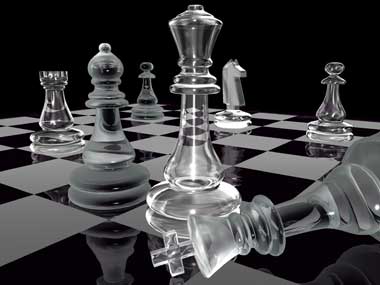But the best productivity systems use both approaches, with the strategy providing a framework for action and the tactics defining those actions. People often use the terms strategy and tactics interchangeably, and that’s where the danger begins. A system based on tactics without strategy leads to shooting in the dark—you might get something done, but it doesn’t become sustainable or provide you with a path to continue on. A system based on strategy without tactics means the strategy has no means of being carried out. The principle is that tactics are defined by the strategy, and that neither can exist effectively without the other.
What is your strategy?
If you want to set up a productivity system, invest the time in not only learning it but making it a habit, and be able to use it for many years to come, it’s very important to consider well your strategy—the foundations of the system. If you do a knock-up job here, you’ll pay for it when you find you need to start from scratch. A builder once told me that when you buy a house, it’s important to check the foundations: you can fix most problems, but if the foundation is unstable, you may end up having to start from scratch. It’s a good time for a retrospective, introspective look at the way you work. Do you work best under pressure? In a minimalist environment? Does having information scattered and cluttered around you inspire you to work? Know your optimal working conditions and set these up as the basis of your strategy, so that your entire methodology motivates you and you get the job done. Avoid the temptation to go with a mindset that doesn’t suit you—don’t choose minimalism just because it’s the trend if clutter actually does get you working. Productivity systems are inherently about getting you to do things, and each person ticks to a different clock. That’s where pre-packaged systems like Getting Things Done often fall down. It’s a great system that works for some, but if it doesn’t work for you, that’s not your fault. Though all productivity requires discipline, if a system just doesn’t work for you, don’t beat yourself up because you just “can’t” become a motivated, productive person. Persist, experiment, and you’ll find out what does work. The other important starting point for developing strategy is your strategic outcome. Know specifically what it is that you wish to achieve through your system; is it purely to get more done, so you can spend even more time on your new business? Or do you want to get all your work done in a shorter time and set boundaries so you can spend more time with your family? Knowing your work mindset and your strategic outcome allows you to form a workable strategy. I’ve found that defining your strategy clearly on paper (or screen) helps you adhere to and retain it. If you leave it to the memory you’ll likely forget all about it next week. Implementation is the next important step, and the way to implement a strategy is through tactics.
Tactics
Every tactic must suit the strategy. If you can’t explain how a tactic helps you achieve the strategic outcome, then it’s probably not the best choice and needs to be rethought. Tactics are the actions that lead to execution of the strategy. The keyword is action, but tactics are made up of a few elements (some of the following are optional, depending on how you work):
An action A purpose A schedule A measurable result
The Action
This is the most obvious element. Without an action, what would a tactic be? For every action that needs to be taken care of in your life, a tactic can be created. Writing this article was one action in a daily writing tactic. This is the tactic I use to ensure that I keep writing despite the temptation to fire up NetNewsWire. This tactic is made up of several actions, since I write for a few different publications.
The Purpose
Sometimes our to-do lists get filled up with tasks that have no purpose. What are you achieving by carrying an action out? Is it helping you achieve your strategic outcome? Is it helping you achieve any of your goals? This component of a tactic serves two purposes: I regularly go through my task list and ask myself, if I do this, what goal or strategic outcome will it advance or satisfy? and frequently, if I don’t do this, how will that affect my projects and outcomes? Shaving unnecessary tasks is important when the list gets too long to complete.
The Schedule
Most effective tactics contain a scheduling component—don’t just decide that you’re going to use an empty inbox tactic (a tactic of the minimalist family), but decide when and how often you’re going to process messages. I would suggest adding those regular tactics to a calendar like Outlook or iCal with a reminder, but that depends on your strategy. Perhaps you avoid tasks when you’re reminded to do them? Actions move you towards your goals, while scheduling ensures actions are executed.
The Measurable Result
When you complete something, can you measure the result? After finishing this article, I’ve got several metrics to work with:
One more piece in my body of work Roughly a thousand more words in my body of work One account receivable Comments (measure success of article and refine for next time)
There’s usually no need to track these results meticulously for every task, but when you’re unsure whether a task is working for you or just wasting your time, measurement provides hard answers. When you adopt a new system in any area of life, changes don’t happen overnight. New systems take time before they become second nature, so work hard at sticking to it and developing those new habits. Most importantly, remember that the most effective productivity systems have the strongest foundations.
